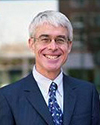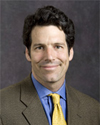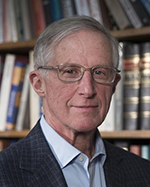An effective way to increase savings rates of employees whose firms have defined contribution plans is to combine automatic enrollment in those plans and periodic automatic increases in their contributions (with the ability to opt out of either).
Responses
© 2025. Kent A. Clark Center for Global Markets.
5%
0%
0%
0%
3%
55%
37%
Responses weighted by each expert's confidence
© 2025. Kent A. Clark Center for Global Markets.
0%
0%
2%
52%
47%
Participant |
University |
Vote |
Confidence |
Bio/Vote History |
|---|---|---|---|---|
 Daron Acemoglu |
MIT | Bio/Vote History | ||
|
|
||||
 Alberto Alesina |
Harvard | Did Not Answer | Bio/Vote History | |
|
|
||||
 Joseph Altonji |
Yale | Bio/Vote History | ||
|
|
||||
 Alan Auerbach |
Berkeley | Bio/Vote History | ||
|
|
||||
 David Autor |
MIT | Bio/Vote History | ||
|
No question that this is effective. Whether it's Pareto improving is open to debate.
|
||||
 Katherine Baicker |
University of Chicago | Bio/Vote History | ||
|
|
||||
 Marianne Bertrand |
Chicago | Bio/Vote History | ||
|
|
||||
 Raj Chetty |
Harvard | Bio/Vote History | ||
|
|
||||
 Judith Chevalier |
Yale | Bio/Vote History | ||
|
Of course, as stated, if the SOLE goal were increasing saving, then even the opt-outs are contrary to the goal.
|
||||
 Janet Currie |
Princeton | Bio/Vote History | ||
|
|
||||
 David Cutler |
Harvard | Bio/Vote History | ||
|
|
||||
 Angus Deaton |
Princeton | Bio/Vote History | ||
|
|
||||
 Darrell Duffie |
Stanford | Bio/Vote History | ||
|
The effort to opt out raises participation. Is that good? Thats a separate issue.
|
||||
 Aaron Edlin |
Berkeley | Bio/Vote History | ||
|
|
||||
 Barry Eichengreen |
Berkeley | Bio/Vote History | ||
|
|
||||
 Ray Fair |
Yale | Bio/Vote History | ||
|
|
||||
 Pinelopi Goldberg |
Yale | Bio/Vote History | ||
|
|
||||
 Claudia Goldin |
Harvard | Bio/Vote History | ||
|
|
||||
 Austan Goolsbee |
Chicago | Bio/Vote History | ||
|
for lots of ppl, the evidence backs this one up well
|
||||
 Michael Greenstone |
University of Chicago | Bio/Vote History | ||
|
Strong evidence that true inside firm savings plan. Less clear abt overall savings. Danish evidence is impt
|
||||
|
Robert Hall |
Stanford | Bio/Vote History | ||
|
An age-contingent default might be even better.
|
||||
 Bengt Holmström |
MIT | Bio/Vote History | ||
|
|
||||
 Caroline Hoxby |
Stanford | Bio/Vote History | ||
|
The research is quite unambiguous on this point. I have not seen any contrary findings (although savvy savers are unaffected by defaults).
|
||||
 Kenneth Judd |
Stanford | Bio/Vote History | ||
|
This might be effective in the short run but I have doubts about the long run
|
||||
 Anil Kashyap |
Chicago Booth | Bio/Vote History | ||
 Pete Klenow |
Stanford | Bio/Vote History | ||
 Jonathan Levin |
Stanford | Bio/Vote History | ||
|
Evidence on defaults seems pretty overwhelming. Not as familiar with the evidence on automatic increases, except Thaler & Benarzi (2004).
-see background information here -see background information here -see background information here |
||||
 Eric Maskin |
Harvard | Bio/Vote History | ||
|
|
||||
 William Nordhaus |
Yale | Bio/Vote History | ||
|
|
||||
 Maurice Obstfeld |
Berkeley | Bio/Vote History | ||
|
|
||||
 Emmanuel Saez |
Berkeley | Bio/Vote History | ||
|
|
||||
 José Scheinkman |
Columbia University | Bio/Vote History | ||
|
|
||||
 Richard Schmalensee |
MIT | Bio/Vote History | ||
|
|
||||
 Hyun Song Shin |
Princeton | Bio/Vote History | ||
|
|
||||
 Nancy Stokey |
University of Chicago | Bio/Vote History | ||
|
See Thaler and Sunstein's "Nudge."
|
||||
 Richard Thaler |
Chicago Booth | Bio/Vote History | ||
|
Finally a question which I am qualified to answer.
|
||||
 Christopher Udry |
Northwestern | Bio/Vote History | ||
|
There is strong evidence that such "nudges" are effective in raising savings. The welfare consequences are less certain.
|
||||
 Luigi Zingales |
Chicago Booth | Did Not Answer | Bio/Vote History | |
|
|
||||

